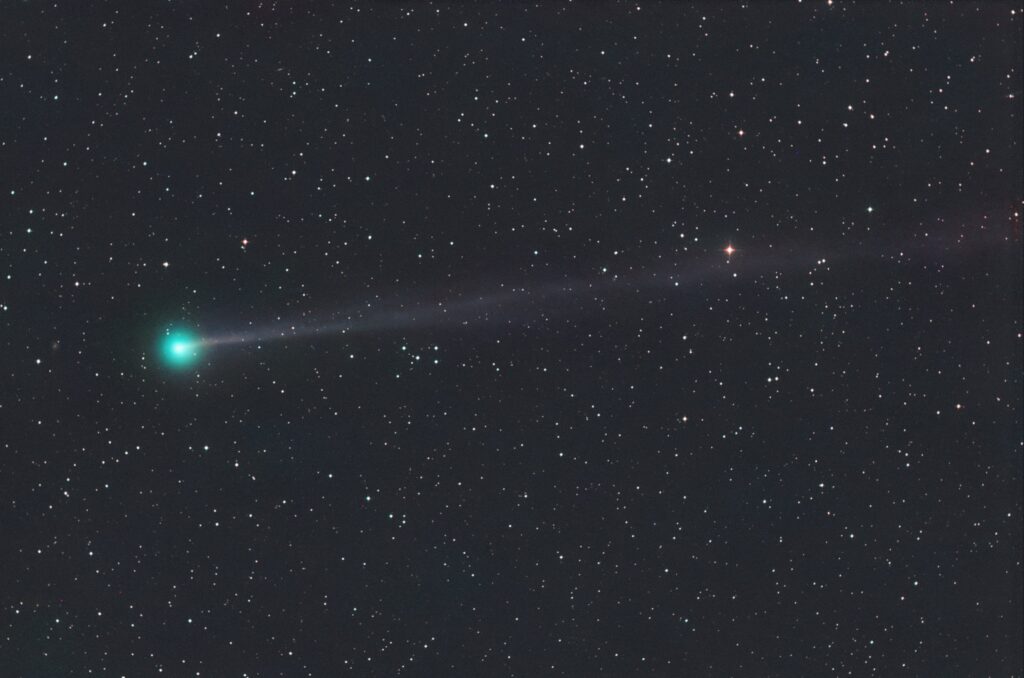Austrian astrophotographer Michael Jaeger has published an image showcasing the comet C/2023 P1 (Nishimura). In the coming days, it may become visible in the Earth’s sky.

Comet Nishimura was discovered just a few weeks ago. It is now approaching the perigee of its orbit, which will occur on September 17th. On this day, the comet will pass at a distance of 0.22 astronomical units (32 million kilometers) from the Sun. This is closer than Mercury’s orbit.
As the Nishimura comet approaches perigee, it is subjected to increasingly intense solar radiation. This causes the evaporation of volatile substances from its nucleus, leading to the formation of a hazy envelope (coma) and a tail composed of gases and dust. It’s worth noting that in Michael Jaeger’s image, the Nishimura comet has a distinct green color. This may be due to the presence of diatomic carbon and cyanide molecules in its nucleus. They break down due to the Sun, accompanied by emission at a wavelength of 518 nm, corresponding to green light.
Due to the comet’s proximity to the Sun, its brightness gradually increases. Currently, its apparent magnitude is about +7.5. It is expected that in the coming days, the comet’s brightness will increase even more, making it observable in the sky with the naked eye.
The main challenge lies in the fact that the Nishimura comet is visible in the pre-dawn sky, making it difficult to observe. The best conditions for observation are considered to be in the first decade of September when its brightness may increase to a magnitude of 3, and the sky remains dark enough for observations. After September 11th, the comet will hide from Earth observers in the Sun’s glare. Next time it will return to the inner part of the Solar System in approximately 300 years.

